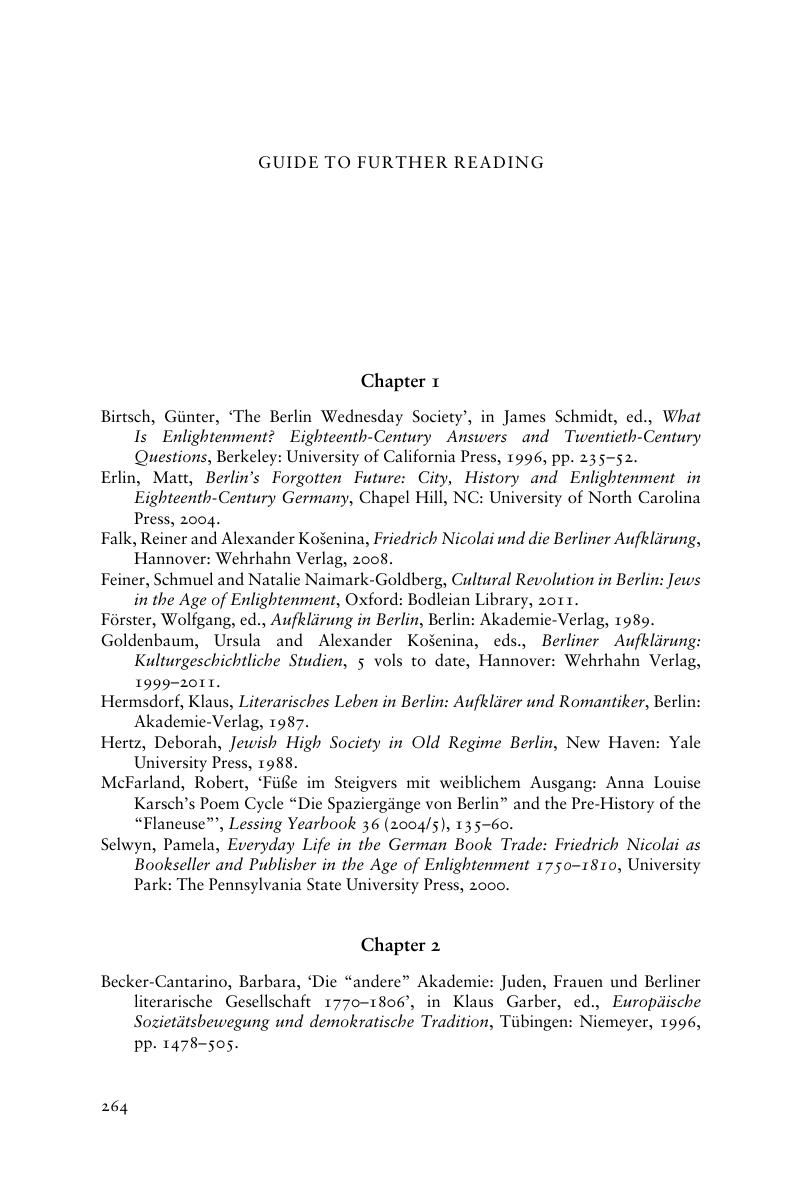Book contents
- The Cambridge Companion to the Literature of Berlin
- The Cambridge Companion to the Literature of Berlin
- Copyright page
- Contents
- Figures
- Contributors
- Editorial Note
- Chronology
- Introduction
- 1 Literature and the Enlightenment
- 2 Romantic Sociability, Aesthetics and Politics
- 3 Literary Realism and Naturalism
- 4 Short Prose around 1900
- 5 Modernist Writing and Visual Culture
- 6 Writing under National Socialism
- 7 Writing in the Cold War
- 8 Writing after the Wall
- 9 Women Writers and Gender
- 10 Queer Writing
- 11 Berlin as a Migratory Setting
- 12 Modern Drama and Theatre
- 13 Twentieth-Century Poetry
- Guide to Further Reading
- Index
- Cambridge Companions To …
- References
Guide to Further Reading
Published online by Cambridge University Press: 23 February 2017
- The Cambridge Companion to the Literature of Berlin
- The Cambridge Companion to the Literature of Berlin
- Copyright page
- Contents
- Figures
- Contributors
- Editorial Note
- Chronology
- Introduction
- 1 Literature and the Enlightenment
- 2 Romantic Sociability, Aesthetics and Politics
- 3 Literary Realism and Naturalism
- 4 Short Prose around 1900
- 5 Modernist Writing and Visual Culture
- 6 Writing under National Socialism
- 7 Writing in the Cold War
- 8 Writing after the Wall
- 9 Women Writers and Gender
- 10 Queer Writing
- 11 Berlin as a Migratory Setting
- 12 Modern Drama and Theatre
- 13 Twentieth-Century Poetry
- Guide to Further Reading
- Index
- Cambridge Companions To …
- References
Summary

- Type
- Chapter
- Information
- The Cambridge Companion to the Literature of Berlin , pp. 264 - 270Publisher: Cambridge University PressPrint publication year: 2017



